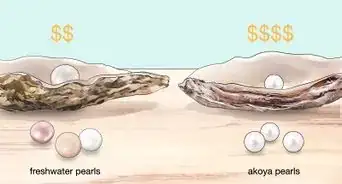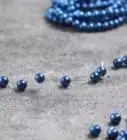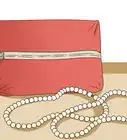This article was co-authored by Michael Arnoldi. Michael Arnoldi's family owns Arnoldi Jewelers in California, a three generation family jewelry business that began in Italy and moved over to the United States. Michael has over 10 years of experience in the jewelry industry.
There are 7 references cited in this article, which can be found at the bottom of the page.
wikiHow marks an article as reader-approved once it receives enough positive feedback. This article received 33 testimonials and 97% of readers who voted found it helpful, earning it our reader-approved status.
This article has been viewed 3,112,524 times.
Thinking of buying pearl jewelry? Have a family heirloom made of pearl? A few simple tests can help you determine whether your pearl item is a fake or the "real deal" in a matter of minutes. Learn how to look and feel for the signs of a real pearl today and you'll never need to worry about falling for imitations again.
Steps
Using Visual Tests
-
1Look for minor imperfections. As noted above, real pearls are only rarely "perfect". Usually, they'll have small blemishes or irregularities in their shape.[1] Their outer nacre layer may also reflect light differently on different parts of the pearl. Imitation pearls are almost always "too perfect" — they look perfectly spherical, they have the same amount of luster on every part of the surface and show no indents or imperfections.
Tip: While perfectly round real pearls are rare but possible, a necklace will almost never be made only from these types of pearls. A necklace made from pearls that all seem to be exactly the same smooth, round shape is almost certainly a fake.[2]
-
2Check for a sharp, healthy luster. Luster is a way that jewelers describe the type of light reflected from a precious stone. A pearl's luster is part of what makes it so beautiful. Good-quality pearls should have a bright, clear luster that makes them shine when light hits them. If you look closely, you should be able to see your own reflection on the pearl's surface.[3]
- One problem with this test is that low-quality real pearls (which generally have a dull, "chalky" luster) can look similar to fake pearls. Check your results with a few of the other tests in this article.[4]
Advertisement -
3Check for an overtone. Good-quality pearls are often prized for their overtones — the subtle color that is visible on their outer surface when light hits them. Fake pearls will usually not have this overtone effect, which is tricky to duplicate. Thus, if your pearl seems very slightly shaded with color when light hits it, there is a good chance it's real. Rose and ivory are two of the most desired overtones for white pearls, though a wide variety of colors are possible, especially for dark pearls.[5]
- Since some real pearls don't have a visible overtone, not seeing an overtone on your pearl isn't necessarily a sure sign that it's fake.
-
4Look for clues around the drill hole. Pearls on a strand or necklace will usually have holes drilled in them for the string to pass through. Examining this hole carefully can help you tell whether your pearl is real or not. Specific things you'll want to look for include:
- Well-defined edges to the hole. Real pearls usually have drill holes with sharp edges (like a hollow cylinder). Fakes often have rough or rounded edges. However, old and well-worn real pearls may also have rounded edges to their holes. Fake pearls may also bow outward at the surface of the pearl, rather than being perfectly cylindrical.
- Chipped paint or coating around the hole. As fake pearls rub against each other with repeated use, their artificial coating can wear away around the holes. You may be able to see slivers of glass or plastic underneath. This is a sure sign of a fake.
-
5Look in the hole for a line between the nacre and nucleus. A real pearl almost always has a clear outer nacre layer, while fake pearls have thin layers of artificial nacre or lack them entirely. If your pearl has a drill hole, you can check for nacre by peering in with a magnifying glass. Real pearls will usually (but not always) have a noticeable line that separates the nacre from the nucleus (the inside part of the pearl).
Using Touch Tests
-
1Rub the pearls against your front teeth. Hold one or two pearls between your thumb and forefinger and press them gently into the biting edge of your front teeth. Rub them against your teeth with a side-to-side motion. A real pearl will usually have a slightly rough or gritty texture from tiny scale-like imperfections in its outer layers of nacre. Fake pearls made from glass or plastic will usually be almost perfectly smooth.[6]
- You may want to brush your teeth before attempting this test to make sure they're clean. Food residue from a recent meal can give false results.
-
2Rub the pearls against each other. Hold a few pearls in your fingers and gently rub them against each other. Feel for the slight sensation of friction. Real pearls will usually generate a little friction when they rub against each other because their outer layers of nacre are not perfectly smooth.[7] Fake pearls, on the other hand, often have smooth coatings and will usually glide past each other when rubbed together.
- Take a close look at your hands after this test. When two pearls rub against each other, their outer layers often erode a small amount. If you notice a fine, powdery, white residue after rubbing your pearls, this is probably powdered nacre — a sign that the pearls are real.[8]
-
3Check whether the pearls are perfectly round. Because they're products of nature, every real pearl is slightly different, just like snowflakes or fingerprints. Most pearls won't be perfect spheres — they'll usually be slightly oblong or have minor defects. If your pearls look perfectly round to you, there's a good chance they're artificial.
-
4Feel for coolness to the touch. For this test, you'll need a few pearls that have been sitting out — not ones you've been wearing. Hold the pearls in your hand and concentrate on the way they feel against your skin. Real pearls should feel noticeably cool for a few seconds before they warm up.[11] The feeling is similar to what you'd get from stepping barefoot onto a marble floor.
- Plastic pearls, on the other hand, will be about room temperature and will warm up more quickly.[12]
- Note: Good-quality fake glass pearls may still give the "cool" sensation. Verify your results with other tests if this is the first one you've attempted.
-
5Feel the weight of the pearl in your hand. Carefully bounce one or two pearls in your hand to get an idea of how much they weigh. Most real pearls feel somewhat heavy for their size. On the other hand, fakes (especially plastic pearls) will have a light, insubstantial feel.
- For obvious reasons, this test isn't perfect — judging the weight of a few small pearls can be tricky. For best results, you may want to compare your pearls with a set you know are real or fake. Always verify with another test no matter how sure you are of a pearl's weight.
Performing Advanced Tests
-
1Check for "scaly" surface patterning with a microscope. You can use a 30x jeweler's loupe, but microscopes with 64-power magnification or more work best for this. The surfaces of real pearls have a maze-like, scaled pattern. This patterning looks a little like a topographical map. It's this microscopic scaling that gives real pearls their "gritty" texture.
- By contrast, fake pearls will often have a surface covered with grainy, fairly regular bumps (a little like the cratered surface of the moon).
-
2Compare your pearls to certified real pearls. All of the tests above are easier if you have some pearls that you know are real for comparison purposes. Try contacting a jeweler about the possibility of comparing your pearls to a set of ones that are certified real. Alternatively, borrow a friend or relative's real pearls to make your comparisons.
- Use common sense about the sorts of tests you do with the certified real pearls. For example, you won't want to try the tooth test or the friction test with someone else's precious stones.
-
3Get your pearls appraised by an expert. If you are having a hard time determining your pearl’s authenticity, you can always take your pearl to a reputable jeweler or gemologist. These professionals have the tools, training, and expert eyes to tell whether your pearl is real (and, if it is real, how high its quality is). However, these options often don't come cheap — a basic appraisal can easily cost more than $100.
-
4Try ordering an X-radiograph test. This test, which an expert may do to determine whether your pearls are real or not uses an X-ray machine. Real pearls will show up as a semitransparent grey color on the X-ray. Fakes will be solid white on the negative and solid black on the positive print.
-
5Try ordering a refractometer test. This advanced test measures how much light passes through the pearl to determine its authenticity. Pearls usually have a refractometer reading (called a "refractive index") of between 1.530 and 1.685. The difference between these two values (0.155) is called the pearl's birefringence, which affects the way the pearl looks in the light. These qualities tell an expert that the pearl is most likely a real one.
Learning What to Avoid
-
1Beware of using just one test to verify pearls. This bears repeating: any single one of the tests above can sometimes produce false results. To be sure of your results, perform many different tests.
- As just one example of how isolated tests can be misleading, one source found that real pearls that have been specially polished can feel very smooth in the tooth and friction tests.
-
2Avoid the "burn" test. Some sources may recommend holding pearls in an open flame to determine whether they are fake or not. According to this rumor, fake pearls will burn or melt, while real pearls will be unaffected. The truth is more complicated. While most fake pearls will be damaged by fire, so will some real ones. Real pearls that have been processed with an artificial outer coating are especially vulnerable to flame and can suffer from blemishes, deformed drill holes, and ruined luster after just a few seconds in a flame.
- In addition, it's worth noting that pearls conduct heat well and can become very hot when heated over an open flame. If you do attempt this test, take all necessary precautions to avoid bad burns.
-
3Don't fall for imitation pearls sold with exotic names. If a seller is trying to sell you on a pearl's name rather than its physical qualities, you may be getting ripped off. For example, "Mallorca" (or "Majorca") pearls, which are named after the exotic Mediterranean island of Mallorca but are entirely man-made, are sometimes sold to unsuspecting costumers.
-
4Don't ignore common sense instincts about a pearl's price. The price of a real pearl will vary greatly based on its size, shape, overtone, and other features. However, they will never be outright cheap. For instance, a necklace made from freshwater pearls (the cheapest variety of real pearls) can easily retail for several hundred dollars. If a seller is giving you a deal on a set of real pearls that seems too good to be true, it probably is.
- As a general rule, you'll only want to buy pearls from licensed, certified jewelers and pearl retailers. Buying pearls from street vendors or pawnshops can be a risky proposition. See our pearl-buying guide for specific tips.
Warnings
- Be careful when performing a tooth test on an individual pearl. Keep a firm grasp on the pearl to avoid accidentally swallowing it.⧼thumbs_response⧽
- You might notice light scratches your pearls when using the tooth or friction test. Rubbing these several times with your thumb should make them go away.⧼thumbs_response⧽
References
- ↑ aucoinhart.com/education/jewelry-education/pearls/determining-pearls-authenticity/
- ↑ http://www.ebay.com/gds/Learn-How-To-Tell-If-Pearls-Are-Real-/10000000204776231/g.html
- ↑ https://www.pearlparadise.com/t-pearlqualityguide.aspx
- ↑ https://www.pearlparadise.com/t-pearlqualityguide.aspx
- ↑ https://www.pearlparadise.com/t-pearlqualityguide.aspx
- ↑ aucoinhart.com/education/jewelry-education/pearls/determining-pearls-authenticity/
- ↑ http://www.pearlsofjoy.com/Fake-vs-Real-Pearls_ep_101-1.html
- ↑ http://www.ebay.com/gds/Learn-How-To-Tell-If-Pearls-Are-Real-/10000000204776231/g.html
- ↑ http://www.pearl-lang.com/pages/how-to-identify-real-pearls-from-fake-pearls
About This Article
To tell if a pearl is real, start by looking at it closely. Real pearls tend to have natural imperfections, such as bumps and ridges, while artificial pearls are usually perfectly round and smooth. Another way to test the difference is by gently rubbing the pearls against your teeth or each other. Fake pearls usually feel smooth, while real ones will feel a little rough or gritty. Check the luster of the pearl as well. High-quality real pearls are bright, shiny, and reflective, while fake ones may appear duller. Be careful, though—low-quality real pearls can also have a dull or chalky appearance. You can also check your pearl for an overtone, which is a hint of color that shows up when you hold it up to the light. Ivory and pink are common overtones for real pearls, but not all genuine pearls have them. If you’re still not sure, grab a magnifying glass and check the drill hole on your pearl. The drill holes on real pearls tend to have clean, clearly defined edges, while the holes on fake pearls may have more of a rough or rounded edge. While you’re at it, peek inside the hole and see if you can spot the line between the nacre (or outer coating) of the pearl and the dull inner core. Most fake pearls won’t have this. Real pearls also tend to feel a little heavy in your hand compared to a plastic pearl. However, a good quality glass pearl will also have that hefty feel. Similarly, real pearls feel cooler to the touch than plastic ones, but glass pearls also feel cool. While all these tests are helpful, it can still be hard to tell the difference between a real pearl versus a well-made fake. If you want to know for sure, take your pearl to a professional jeweler. They can do more advanced tests, such as examining the pearl under a microscope or taking x-rays to look at its inner structure. For more information from our Jeweler reviewer, including tips on how to get your pearls appraised, read on!

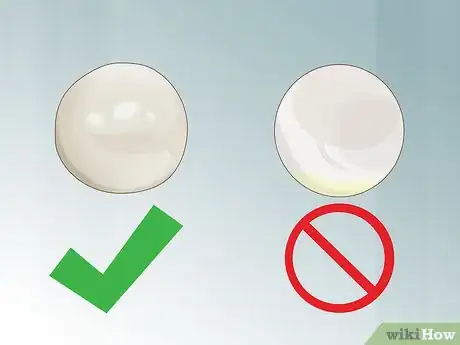
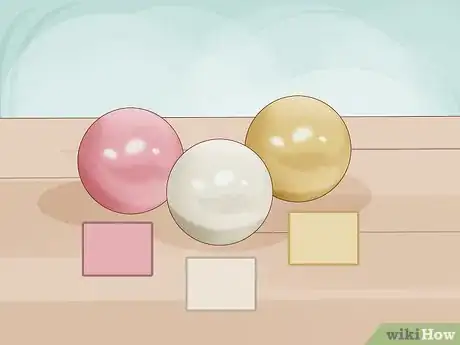
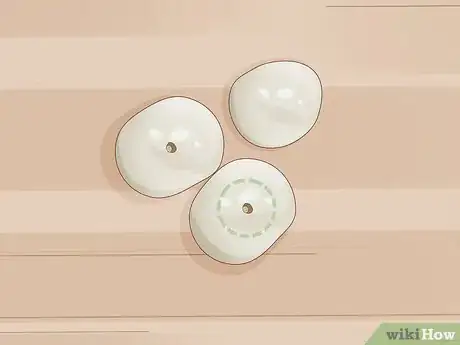
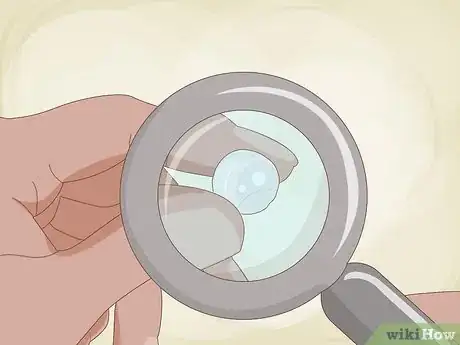

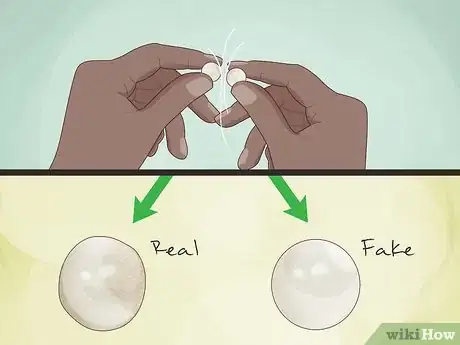

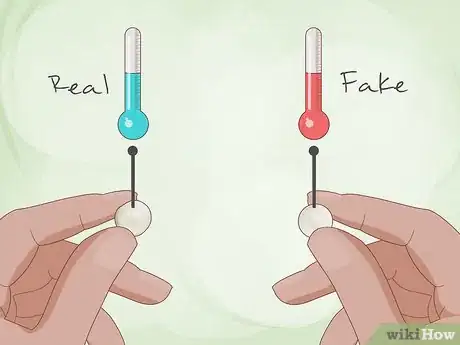
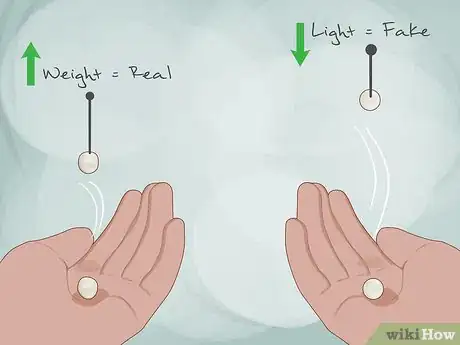
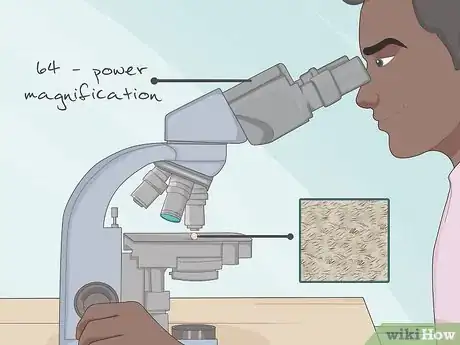

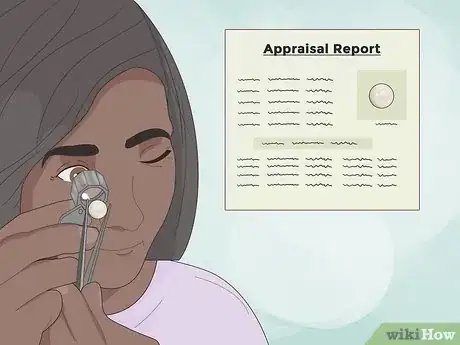

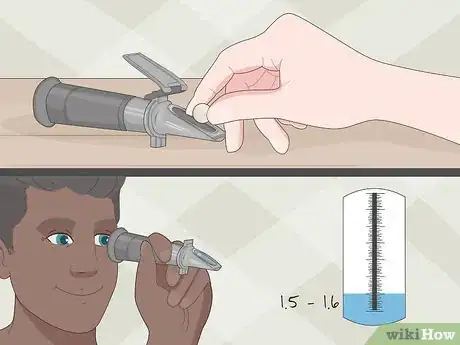




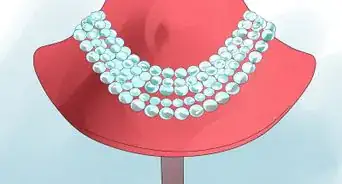
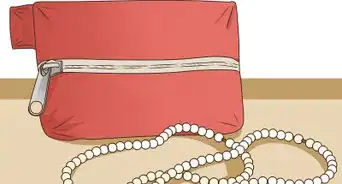




-Step-4.webp)
